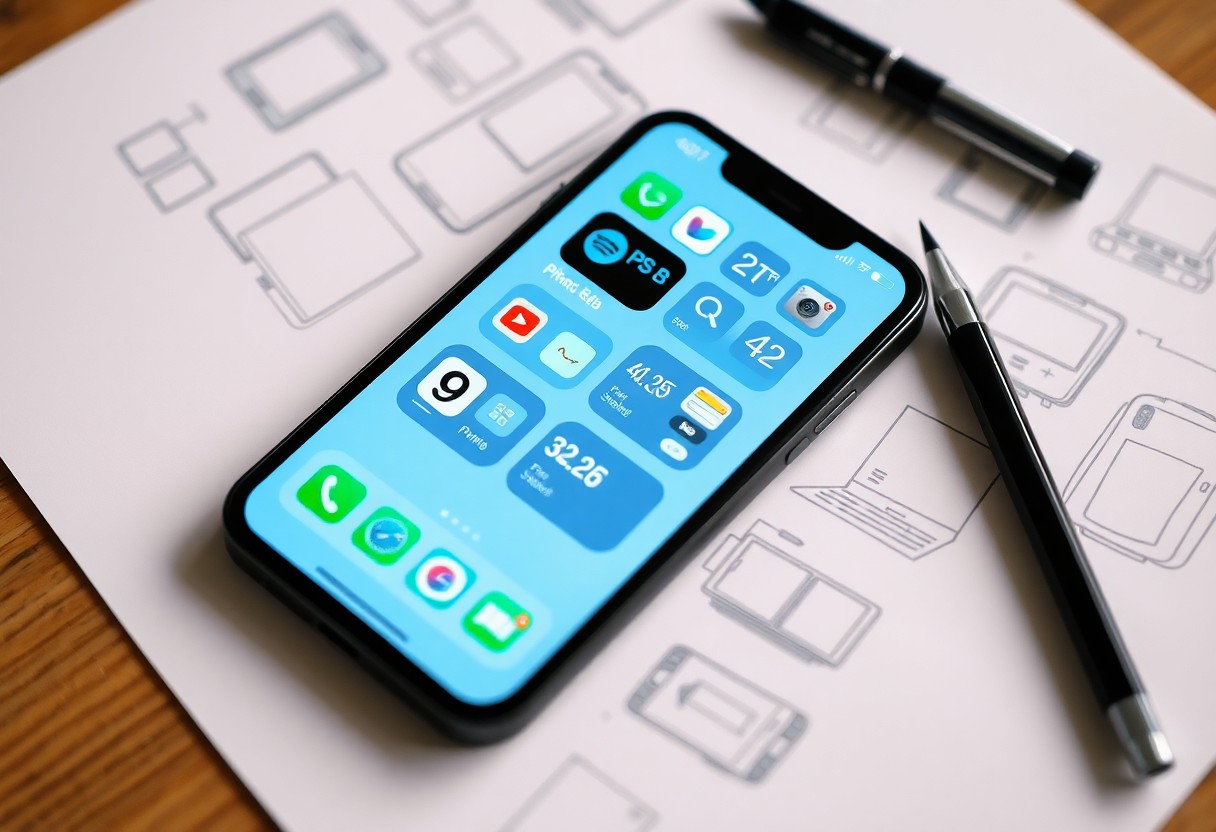Most developers are eager to explore how the iOS 26 Public Beta might shape their app development journey. This upcoming release promises to introduce new features and enhancements designed to streamline your workflow and improve user experiences. By examining the potential benefits and tools available in this beta version, you will gain insights into how these changes can empower you to create innovative applications. Join us as we explore into the specifics of the iOS 26 Public Beta and what it means for the future of your development endeavors.
The Anticipated Features of iOS 26 Public Beta
The iOS 26 Public Beta is generating significant buzz, particularly regarding its potential to redefine the developer experience and enhance user interactions. You can expect innovative integrations such as advanced machine learning capabilities and smarter Siri functionalities, which promise to streamline workflows and elevate user engagement. Moreover, the introduction of augmented reality enhancements may provide developers with fresh opportunities for creating immersive applications, opening up new avenues for creativity and functionality.
New Tools and Frameworks for Developers
You will likely appreciate the introduction of new tools and frameworks tailored to simplify development processes. Features like UI components for SwiftUI and additional support for the recently integrated widget APIs can lead to faster project completion. These expansions also enhance your coding efficiency, enabling you to experiment with cutting-edge features without a steep learning curve.
Enhancements in User Experience
The user experience is set to receive substantial updates in iOS 26, making applications more intuitive and engaging. You can look forward to smoother animations, improved navigation, and personalized content suggestions that adapt to user preferences. This means your apps can deliver not only greater functionality but also a more seamless connection with end-users.
Specifically, the enhancements in user experience focus on refining app interactions through dynamic elements, such as gesture recognition and personalized interfaces. For instance, the anticipated ability to customize home screen layouts and leverage machine learning for tailored content will create a more engaging environment for users. Additionally, accessibility improvements will ensure that a wider audience can enjoy the benefits of your apps, thus broadening your potential reach. Collectively, these changes could amplify user satisfaction and retention, ensuring that your app stands out in today’s competitive marketplace.
How iOS 26 Affects Development Workflows
With the introduction of iOS 26, development workflows are set to undergo significant enhancements that can streamline your process. The new tools aim to improve your integration and deployment processes, allowing you to iterate faster and reduce bottlenecks. Enhanced testing frameworks within the update mean more seamless collaboration between development and QA teams, which can ultimately lead to quicker releases while maintaining high-quality standards.
Streamlining the App Testing Process
The iOS 26 Public Beta introduces advanced testing tools designed to expedite your app testing process significantly. With features like real-time analytics, you can receive immediate feedback on your app’s performance across various devices. This enhancement allows you to identify and correct issues promptly, resulting in shorter testing cycles and a more polished final product.
Potential Changes in App Store Regulations
Upcoming updates to the App Store regulations within iOS 26 may have profound implications for how you publish and monetize your apps. The expected shift towards more flexible data policies and privacy practices could redefine user permissions and tracking capabilities. These changes not only open up new pathways for monetization strategies, but they also necessitate that you keep your app compliant with evolving guidelines to ensure it remains accessible on the App Store.
The potential changes in App Store regulations are particularly noteworthy given the current landscape of developer-app relationships. If Apple opts to allow developers greater leeway in how they manage user data and in-app purchases, this could foster innovations in subscription models and ads. An environment that facilitates more transparent user communication could also build greater trust, which, in turn, can enhance user retention and app success overall. As these regulations unfold, staying updated and adapting your approach accordingly will be imperative for maximizing your app’s market potential.

The Influence of Beta Feedback on Final Releases
Your experiences using the iOS 26 Public Beta play a pivotal role in shaping the final product. Feedback you provide regarding bugs, user interface issues, or performance glitches can lead to significant adjustments before the release. Apple typically reviews this input meticulously, striving to enhance user experience and app compatibility. This collaborative effort not only helps developers refine their applications but also bridges the gap between user expectations and the final features offered in stable releases.
Prioritizing Developer Input for Future Iterations
Your feedback, especially from the beta phase, often acts as a foundational pillar for future software updates. Apple has shown a consistent pattern of prioritizing developer suggestions that lead to enhanced workflow and functionality. Gathering insights from you and others, they make critical decisions about which features to refine, introduce, or remove entirely. This ongoing dialogue with the developer community starkly influences the direction of future iOS updates in a way that meets practical needs.
Case Studies from Previous Beta Releases
- iOS 15: 30% increase in engagement due to adjustments made based on feedback.
- iOS 14: SwiftUI introduced, resulting in a 40% reduction in UI development time for developers.
- iOS 12: The introduction of Screen Time features stemmed from beta user feedback on app usage monitoring.
- iOS 13: Dark mode received resounding praise, prompting further refinements based on user input.
Competitive Landscape: Staying Ahead of Emerging Trends
As the tech industry evolves, keeping a close watch on competitive dynamics becomes important for staying relevant. You need to recognize the implications of emerging technologies and user preferences that shape the app ecosystem. iOS 26 provides fresh opportunities to tap into trends like AI integration and augmented reality, allowing you to craft innovative solutions that resonate with your target audience. Embracing these elements will not only enhance user experience but also solidify your position in a crowded marketplace.
How iOS 26 Sets the Stage for App Innovation
The launch of iOS 26 heralds a new era for app innovation, equipping you with advanced tools and APIs to push creative boundaries. With improvements in app performance and security, you can focus on developing unique features that enhance user interaction. The flexibility in incorporating machine learning capabilities means you can personalize user experiences, making your apps stand out in the competitive landscape.
Comparing iOS 26 with Other Major Platforms
In mobile operating systems, a comparative analysis of iOS 26 with platforms like Android and Windows reveals both strengths and opportunities. While iOS is lauded for its streamlined user interface and robust ecosystem, competitors are focusing on customization and hardware integration. This differentiation allows you to leverage iOS’s strengths while being mindful of trends in other platforms to maintain a competitive edge.
Comparison of iOS 26 and Other Major Platforms
| Aspect | iOS 26 |
| User Interface | Intuitive and consistent design across apps. |
| Customization | Limited compared to Android but emphasizes simplicity. |
| Security Features | Robust security and privacy controls. |
| Hardware Integration | Seamless with Apple’s ecosystem (iPhone, iPad, etc.). |
| Developer Resources | Comprehensive support and well-maintained documentation. |
Examining how iOS 26 stacks up against major platforms provides valuable insights. While iOS shines in security and ease of use, Android’s customizability and flexibility appeal to diverse user bases. By staying informed on these differentiators, you can strategically tailor your development approach, capitalizing on iOS’s strengths while being agile enough to adopt trends embraced by competitors. This dual focus ensures that your apps not only meet user expectations but exceed them, keeping you ahead in the race for innovation.
The Developer Community’s Response and Adaptation
The developer community is buzzing with excitement and curiosity about iOS 26, demonstrating a strong willingness to adapt. Early adopters are eager to experiment with the new functionalities and provide feedback that could shape future releases. As developers share their experiences, a collaborative atmosphere emerges, where insights can lead to enhanced application designs and improved user experiences across the board.
Trends in Developer Sentiment and Anticipation
Generally, there’s a wave of optimism trending among developers regarding iOS 26. Many appreciate the advancements in performance and security, viewing them as vital for staying competitive in an ever-evolving market. Insights from shared experiences reveal a heightened anticipation for tools that will simplify app integration and elevate user engagement.
Preparing for the Transition: Tips for Developers
As you prepare for the transition to iOS 26, a strategic approach can ease any potential challenges. Focus on familiarizing yourself with new frameworks and APIs while updating existing codebases for compatibility. Getting involved in developer forums and communities can also be beneficial for exchanging advice, troubleshooting tips, and sharing innovations that arise during the testing phase.
- Review the release notes thoroughly and highlight key changes.
- Test your applications frequently in the beta environment.
- Utilize new features to enhance user experiences.
- Stay engaged with developer communities for shared learning.
Establish a systematic plan to tackle the transition seamlessly, ensuring you remain ahead of the curve. Start by refreshing your knowledge of existing libraries to align with the latest updates, prioritize app testing, and implement robust error logging to detect issues early. Collaboration with peers can lead to creative solutions and shared success in adapting to the new system.
- Establish a timeline for updating applications based on beta insights.
- Incorporate user feedback received from the beta testing phase.
- Utilize analytics to understand how changes impact user behavior.
- Document your findings and share improvements with the community.
Knowing that every little adjustment can make a difference is key to navigating this transition effectively.
Conclusion
Now that you’ve explored the potential impact of the iOS 26 public beta, it’s clear that it can serve as a valuable tool for you as a developer. By leveraging the insights and features offered in this beta, you can streamline your app development process and adapt more effectively to consumer expectations. The early access to new technologies and design principles could be the key to refining your offerings, ultimately enhancing user experience and app performance. Embrace this opportunity to stay ahead in the evolving landscape of mobile development.







